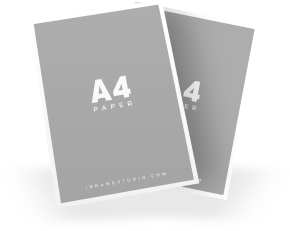Students in high school today have many options to earn college credits before they even start college; dual enrollment is one such way. Others are taking AP classes and exams. One of the main reasons students find dual enrollment appealing is the fact that it can earn them college credits and ultimately reduce how much they pay for college. These programs can also improve some students' chances of going to college, especially first-generation students and those from underserved communities. But what is dual enrollment?
What is Dual Enrollment?
Dual enrollment programs allow high school students to take college-level courses and earn both high school and college credits at the same time. These programs are often offered at community colleges, although some 4-year colleges also offer them.
Some programs allow you to earn a few college credits, while other programs like early college high school programs might allow you to earn an associate degree while you are in high school.
Sounds great, right? But what are the benefits and challenges of dual enrollment, and how can you help your student decide if it is right for them? Let’s dig in.
>>RELATED POSTE: How to Get a Full-Ride Scholarship
What is the difference between dual enrollment and dual credit?
Before we dive into the details of dual enrollment, let's clarify some terms. Dual enrollment and dual credit are often used interchangeably, but they are not exactly the same thing.
Dual enrollment means that a student is enrolled in both high school and college at the same time. Dual credit means that a student earns both high school and college credits for the same course. Most dual enrollment programs offer dual credit, but not all dual credit courses are part of a dual enrollment program.
Where are dual enrollment classes offered?
Dual enrollment classes can be offered in different settings, depending on the program and the partnership between the high school and the college. Some common options are:
1. On-campus
Students take classes at the college campus, along with other college students and taught by college professors. In some cases, students might come to campus for a class or two, or they could be part of an early college high school that is housed on the college campus.
2. Online
Students take classes online, through the college's learning management system or platform. They may have to attend live sessions or complete assignments on their own schedule.
3. Hybrid
Students take classes that combine online and on-campus components. For example, they may attend lectures online and do labs or projects on campus.
4. High school
At their high school, teachers who are qualified to teach college-level courses instruct students in classes. The classes may follow the curriculum and standards of the college, or they may undergo changes to accommodate the high school's schedule and requirements.
>>RELATED POST: Top 25 Scholarship for High School Seniors
Benefits of dual enrollment
These classes can offer many advantages for high school students, such as:
1. Saving time and money
By earning college credits while still in high school, students can reduce the time and cost of completing a college degree. Depending on the program and the state you live in, students may be able to take dual enrollment courses for free or at a reduced tuition rate.
2. Exploring academic interests
Dual enrollment courses can expose students to a variety of subjects and disciplines that they may not encounter in their regular high school curriculum. This can help them discover their passions and career goals, as well as prepare them for the rigor and expectations of college-level work.
3. Boosting academic performance
Research shows that students enrolled in these classes tend to have higher GPAs, graduation rates, and college enrollment rates than their peers who do not participate in dual enrollment. Participation in these classes can also improve students' confidence, motivation, and study skills.
4. Enhancing college readiness
Dual enrollment can help students transition smoothly from high school to college by giving them a taste of the college environment and culture. Students can learn how to manage their time, balance their workload, communicate with professors, and navigate campus resources. Studies show that these programs boost college-going and persistence rates among first-generation students and students from underserved communities.
Challenges of dual enrollment
While dual enrollment presents many advantages, it is important to be aware of two notable challenges. Firstly, students must balance the demands of high school and college courses, which can be stressful and overwhelming. Good time management and organization skills are essential for success in dual enrollment.
Secondly, eligibility requirements, including GPA, test scores, and prerequisites, must be met. Additionally, approval from a high school counselor and parent may be necessary. Adjusting to different expectations, such as grading policies and homework assignments, can also be a challenge, and students may miss out on high school experiences and feel disconnected from their peers and teachers.
Is dual enrollment right for your child?
Dual enrollment is not for everyone. It is important to consider your student's academic goals, interests, abilities, and personality before enrolling them in dual enrollment courses. Here are some questions to ask yourself and your student:
1. What are the reasons for your student's interest in dual enrollment? Are they seeking career exploration, academic challenges, or save time and money? There are no wrong answers.
2. How does your student perform academically? Do they have a strong GPA and test scores, along with the required skills and knowledge for their desired dual enrollment courses?
3. Is your student mature and responsible enough to handle a heavier workload and more challenging courses? Can they effectively manage their time, meet deadlines, and seek help when needed?
4. Is your student involved in their high school community? Do they participate in clubs, sports, and other activities, and have friends and mentors at their current school?
5. How flexible and adaptable is your student? Can they adjust to different teaching styles and expectations, and cope with the stress that might come from being in a college environment?
If you and your student answer these questions honestly and positively, then dual enrollment may be a good option for them. However, if you or your student have doubts or concerns about any of these aspects, then you may want to reconsider or postpone dual enrollment until your student is more ready.
Conclusion
Dual enrollment is a program that allows high school students to take college-level courses and earn both high school and college credits at the same time. One of the many benefits of dual enrollment is saving money, but it also has some challenges.
Therefore, it is important to weigh the pros and cons of dual enrollment and consider your student's individual needs and goals before enrolling them in dual enrollment courses. If you are interested in learning more about this program, you can contact your high school counselor or visit the website of the college in your area (usually the community college) that offers the program. They can provide you with more information about the eligibility requirements, course offerings, and costs.



